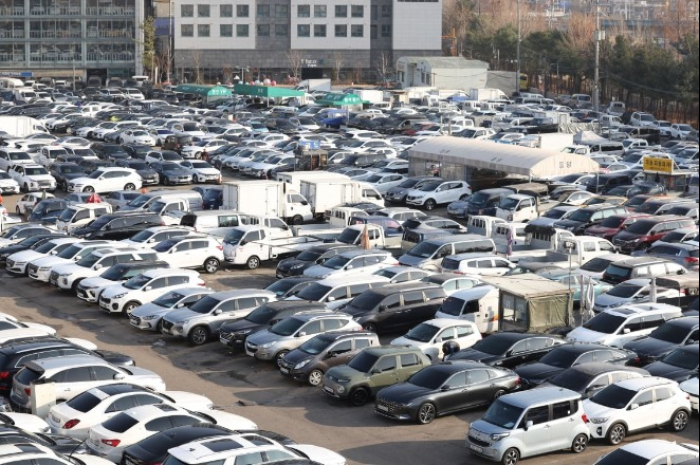Automobiles
S.Korean used cars flow into Russia via Central Asia
The 70-80% of S.Korean used cars exported to Kazakhstan and Kyrgyzstan are believed to be bypassed to Russia
By Feb 16, 2024 (Gmt+09:00)
2
Min read
Most Read
LG Chem to sell water filter business to Glenwood PE for $692 million


KT&G eyes overseas M&A after rejecting activist fund's offer


Kyobo Life poised to buy Japan’s SBI Group-owned savings bank


StockX in merger talks with Naver’s online reseller Kream


Meritz backs half of ex-manager’s $210 mn hedge fund



These vehicles typically passed through customs clearance in Almaty and Bishkek, the principal cities of Kazakhstan and Kyrgyzstan.
They were then transported into Russia, mainly by truck and possibly by rail in some cases, with Moscow and Saint Petersburg being the primary destinations.
Estimates suggest that last year alone, thousands, potentially even tens of thousands, of South Korean cars entered Russia from Kazakhstan and Kyrgyzstan, with about 70-80% of the used cars exported to these countries ending up in Russian territory.
The Customs Office indicates that in the previous year, Kazakhstan received 13,347 used cars, and Kyrgyzstan 5,905 from South Korea.
Kazakhstan's import of South Korean used cars saw a rise from 4,000 units in 2021 to over 10,000 last year.
Similarly, Kyrgyzstan experienced a surge in imports from 4,490 units in 2021 to over 50,000 last year, a spike attributed to its comparatively lower customs tariffs than Kazakhstan.
Amidst international sanctions imposed on Russia following its 2022 invasion of Ukraine, there's speculation that new cars manufactured in South Korea might also have been channeled into Russia through these countries.
The post-sanction period witnessed a remarkable increase in vehicle exports to Kazakhstan and Kyrgyzstan, with 29,297 and 500 vehicles respectively last year, marking increases from 2022. Compared to 2021, exports to these countries grew by 65.6% and over 700%.
Although directly or indirectly exporting passenger cars to Russia isn't inherently illegal, the South Korean government has implemented export controls on vehicles exceeding $50,000 since April last year, thus permitting transactions involving lower-priced vehicles.
A foreign affairs expert highlighted the complexity of legally addressing the diversion of controlled goods into Russia via third countries, noting the increased burden on relevant departments to effectively monitor sanctioned items.
In a move to tighten controls, the Ministry of Trade, Industry and Energy announced a proposal last December to adjust the export control list to include medium and large passenger cars with engine displacements over 2,000 cc.
If enacted, this could place popular SUV models in Russia, such as Hyundai Tucson, Santa Fe, Kia Sorento, and Sportage, under export bans, marking a shift in export policy.
Write to Sul-Gi Lee at surugi@hankyung.com
More to Read
-

-
 AutomobilesHyundai Motor to take 1st crack at Korea’s used car market
AutomobilesHyundai Motor to take 1st crack at Korea’s used car marketJun 26, 2023 (Gmt+09:00)
3 Min read -
 AutomobilesTop Korean companies’ new battlefield: Used car market
AutomobilesTop Korean companies’ new battlefield: Used car marketJun 24, 2022 (Gmt+09:00)
3 Min read -
 AutomobilesHyundai, Lotte to join used car market, seen as boost for small players
AutomobilesHyundai, Lotte to join used car market, seen as boost for small playersMar 18, 2022 (Gmt+09:00)
3 Min read
Comment 0
LOG IN


